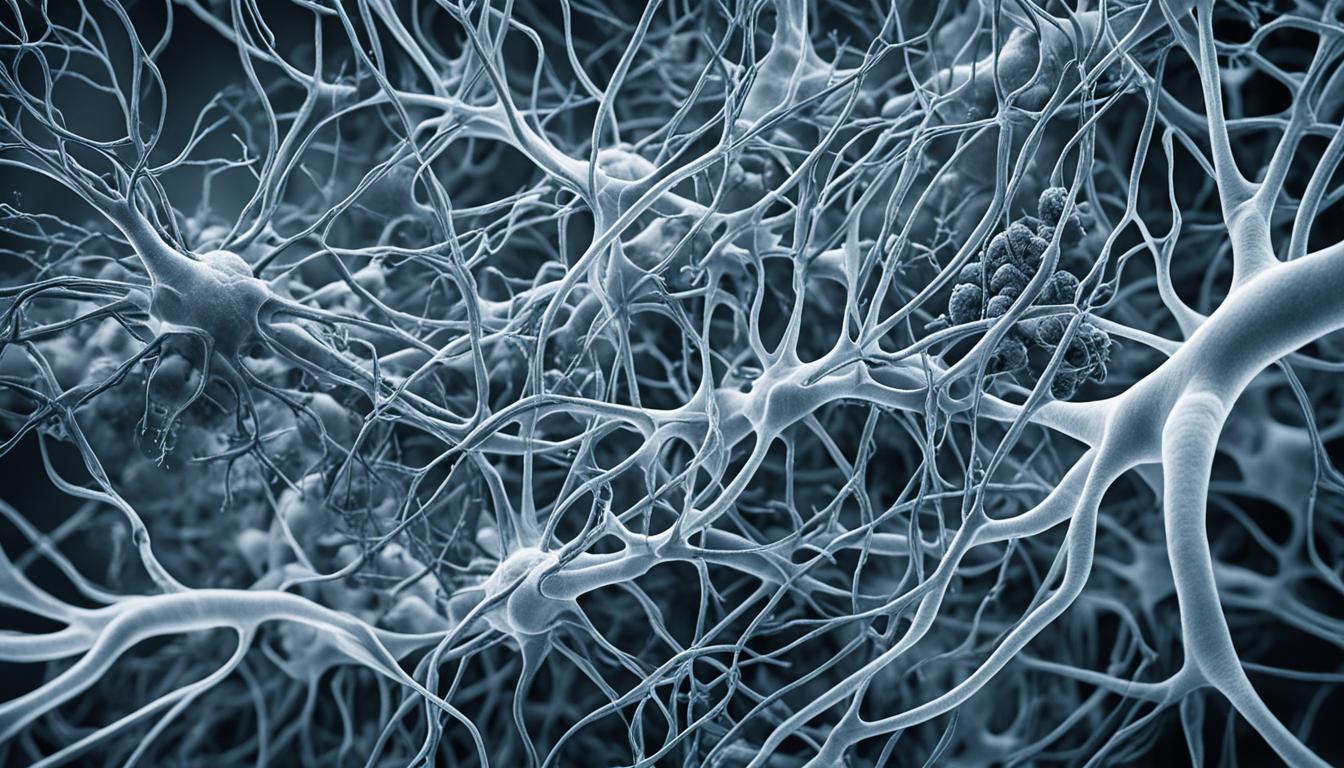Secondary brain cancer starts when cancer cells from another part of the body move to the brain. This is known as metastatic brain tumors or brain metastases. If the original cancer started, for example, in the lung, the brain cancer will also be lung cancer.
Key Takeaways:
- Secondary brain cancer is the spread of cancer cells from a primary cancer to the brain.
- The secondary cancer is made up of the same type of cells as the primary cancer.
- Metastatic brain tumors can originate from different primary cancers in the body.
- Diagnosing secondary brain cancer involves imaging tests and biopsies.
- Treatment options for secondary brain cancer include chemotherapy, radiation therapy, surgery, and targeted therapies.
Symptoms and Diagnosis of Secondary Brain Cancer
The signs of secondary brain cancer change based on where the tumor is. Key signs often are:
- Headaches: Regular headaches that might get worse in the morning or as time goes on.
- Nausea or vomiting: Throwing up or feeling sick without a clear reason.
- Weakness in a part of the body: Feeling weak, numb, or having tingling on one side.
- Seizures: Sudden, uncontrollable movements or lapses in awareness, often with muscle jerks.
- Changes in personality or mood: Acting differently, having mood swings, or changing how you see others.
- Changes in vision or speech: Seeing things unclear, having double vision, or talking and understanding less well.
Please remember, these signs could be from other issues and not just cancer. If you show these signs, see a doctor soon.
Diagnosing Secondary Brain Cancer
Doctors will start with tests when they think you might have brain cancer. These exams can include:
- Neurological examination: Checking reflexes, coordination, muscle power, and touch to look for problems that could be brain tumors.
- Imaging tests: Scans like MRI or CT create pictures of your brain to find any problems.
- Biopsy: Taking a small piece of the tumor to find out what kind of cancer it is. This helps choose the best treatment.
- Lab tests: Blood tests and other checks to learn about your health and look for signs of brain cancer.
If secondary brain cancer is confirmed, other tests will follow. These help decide how big the issue is and the best way to treat it.
Treatment Options for Secondary Brain Cancer
Secondary brain cancer can’t be cured. However, there are ways to manage it and improve a patient’s life. The treatment chosen depends on many things. This includes the main cancer type, brain tumor amounts and locations, patient’s general health, and if cancer is elsewhere.
Chemotherapy is a common treatment. It uses special drugs to stop or destroy cancer cells. These drugs might be taken by mouth or through a vein. They are often part of a mix with other treatments.
Then, there’s radiation therapy. It uses strong radiation to attack cancer cells. This can happen from outside the body or right by the tumor. This is done through a method called brachytherapy.
Sometimes, surgery is done to take out brain tumors. It can help ease symptoms and make tumors smaller. But, surgery may not always be an option based on the tumor’s spot or number.
Targeted therapy is another approach. It aims directly at cancer cells while leaving healthy cells alone. It disrupts cancer’s growth and spread by targeting certain parts of the cells.
Stem cell therapy is also being tested. It plans to use stem cells to fix damaged brain tissue and return brain function to normal. More research is still needed. But, it could be big for treating secondary brain cancer in the future.

